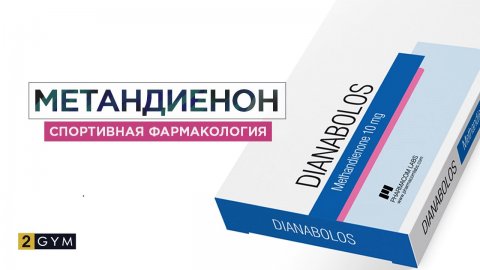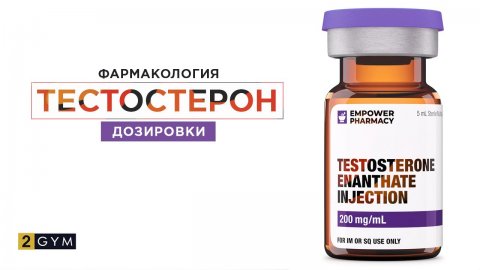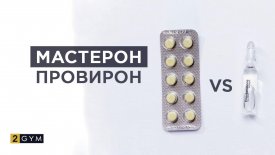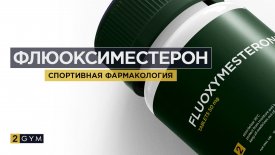Dianabol
There is still no consensus on whether "Dianabol" was the brainchild of John Ziegler or if it was developed by unknown researchers from the Ciba laboratory in the USA.
In any case, John Ziegler can rightfully be called the "father" of the drug – as there is no doubt that he was the one who introduced "Dianabol" to the world of sports.
Initially, "Dianabol" was used by athletes in strength sports due to its unique ability to rapidly increase strength and muscle mass. Eventually, athletes from other sports also began to use it.
However, soon athletes from sports that emphasized endurance or flawless technique had to abandon the new drug – it was found to somewhat stiffen muscles and disrupt the cell's "breathing" process, i.e., its oxygen supply.
Features
- Has a very low affinity for androgen receptors
- Under the influence of aromatase, it converts into a very potent 17-methylestradiol. This conversion stimulates the accumulation of glycogen in muscle fibers
- Reduces the activity of cortisol
- Retains a lot of water in the body. After the "cycle" ends, almost all this water leaves the body
- Can improve mood
- Can activate the lipolysis process
- Due to its short half-life, it is actively used in intermittent cycles
- Metabolites can easily be detected during doping control procedures
Methandrostenolone in Bodybuilding and Other Sports
As for bodybuilding, "Dianabol" quickly became the "number one" drug and held the lead until the late 70s. Its list of fans is huge and includes all the winners of the "Mr. Olympia" tournament, from Larry Scott to Frank Zane.
Even today, many bodybuilders often start their "chemical career" with "methane." The original "Dianabol" was discontinued in 1972, but by then, products containing methandrostenolone were being produced in Europe, particularly in the USSR.
In my former homeland, the drug was simply cultic – the preparation of track and field athletes, weightlifters, and swimmers was based on it, despite all its known drawbacks.
Unfortunately, with the development of doping control, methandrostenolone disappeared from most sports, and now it is mainly used in disciplines where the use of banned substances is overlooked.
Effects on the Body
When discussing the advantages and disadvantages of methandrostenolone, it is important to note that the molecule of this androgenic anabolic steroid, due to its structural characteristics, has very low affinity for androgen receptors.
Nevertheless, the drug can somehow stimulate protein synthesis, although the exact mechanism is still not fully understood.
It is assumed that the complex "methandrostenolone molecule – sex hormone-binding globulin (SHBG)" interacts with certain receptors on the cell surface, which subsequently leads to increased protein synthesis by this cell.
Interestingly, methandrostenolone binds to SHBG much worse than other steroids, so a larger amount of the steroid remains in a biologically available state.
Methandrostenolone significantly improves glycogenolysis (the replenishment of glycogen stores depleted during training), reduces the activity of cortisol, and thus helps prevent muscle fiber breakdown in the post-workout period.
Contrary to popular belief, methandrostenolone does not aromatize very well; in this respect, it is comparable to boldenone, which has a similar molecular structure. But under the influence of aromatase, the steroid converts not just into estradiol, but into a much more potent 17-methylestradiol.
Therefore, most of the mass gained with methandienone is water retention, which tends to disappear after the drug is discontinued. However, with moderate doses of "methane" – around 25-30 mg/day – significant water retention can be avoided.
Methandienone During "Cutting"
Methandrostenolone has the exceptional property of increasing dopamine levels in the body, which is useful for reducing subcutaneous fat. The influence of methandrostenolone on dopamine levels is not yet fully proven theoretically.
However, in practice, introducing methandrostenolone into a "fat-burning cycle" (for example, combining it with non-aromatizing boldenone, trenbolone, or oxandrolone) can accelerate the process of eliminating excess subcutaneous fat.
Form of Release
Oral tablets, usually containing 5 or 10 mg of the active substance. The half-life is 4-6 hours.
Currently, the raw material for methandrostenolone production is synthesized only in China.
Often, this raw material is of very low quality. Additionally, there are many counterfeit methandienone products: they either lack the active substance or use cheaper methyltestosterone as a substitute.
Usage Guidelines
| Mass Gain | Actively used | Optimal combination with: testosterone, trenbolone, nandrolone, boldenone, metenolone. |
| Strength Increase | Actively used | Optimal combination with: testosterone, trenbolone, nandrolone, boldenone, metenolone. |
| Endurance Increase | Not used | Not currently used |
| Bodybuilding Competition Preparation, Fat Burning | Not used | Not used, despite having "fat-burning" activity |
| Recovery After AAS Cycle | Rarely used | Rarely used, only in an intermittent scheme |
Dosages
| Standard dosage | 20-30 mg |
| For advanced athletes | 50 mg |
| High dosage | 100 mg |
The daily dose should be divided into 4-5 doses (every 4-6 hours, excluding nighttime)
Side Effects
| Suppresses own testosterone secretion | Yes |
| Negative impact on the liver | Yes |
| Negative impact on the kidneys | No |
| Negative impact on the cardiovascular system | Insignificant |
| Increased aggression | Rarely |
| Hair loss on the head, hair growth on the body | Possible |
| Acne | High probability |
| Gynecomastia | Possible |
Use by Women
Despite the fact that in the early to mid-60s, it was common practice for doctors to recommend methandrostenolone to women in doses of 5 mg per day for "toning," it is better for women to avoid this steroid, as even relatively small doses of "methane" can cause virilization.





























Log in with ( Sign Up ? )
or post as a guest
Be the first to comment.